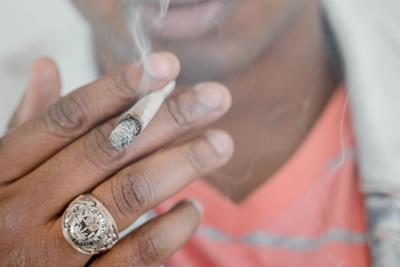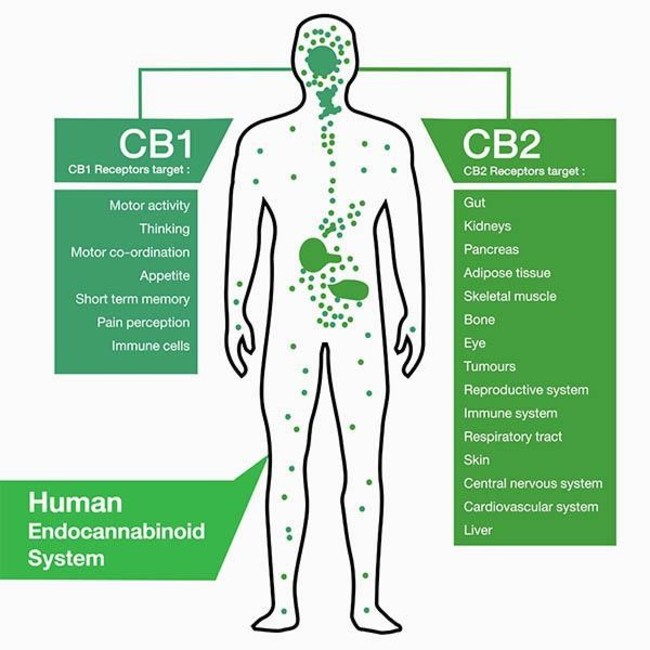
Tuesday August 31, 2021
By Trevor Ross
 420 Culture
420 Culture
"When you return to this mundane sphere from your visionary world, you would seem to leave a Neapolitan spring for a Lapland winter — to quit paradise for earth — heaven for hell! Taste the hashish, guest of mine — taste the hashish.”
So reads a passage from The Count of Monte Cristo, written by Alexandre Dumas, who was a member of the Parisian Club des Hashischins, “the hash-eaters club.” Another of the Hashischins, Honore de Balzac, was entranced with his experiences on cannabis, writing to a friend in 1845, “When I left the group, I began to hear celestial voices and see divine paintings.”
But what does it actually feel like to be high? By now, everyone has read the same list of sensations — euphoric, giggly, hungry, sleepy, etc. — but it becomes reductive, and asks the reader to take a lot remaining on faith. So follow along as we try to describe, for everyone else, what to expect when using cannabis, and what it feels like to be high.
How Does Cannabis Get You High?
First, let’s review how cannabis gets you high at all. Cannabis interacts with the endocannabinoid system (ECS) found in most mammals. Medical researchers are still studying the broad reach of the ECS, but so far two cannabinoid receptors have been cataloged. CB1 receptors are found primarily in the brain, and CB2 receptors are located throughout the peripheral systems (the body, muscles, nerve endings, etc).
Our bodies already have these receptors because we produce our own endocannabinoids. The brain uses chemicals like anandamide to neurotransmit commands throughout the body.

These chemicals bind with cells which signal them to behave a different way — in this case, by relieving pain or reducing inflammation. In the brain, endocannabinoids like 2-AG (2-Arachidonoylglycerol) calm compulsively firing neurons, relieving anxiety.
When you smoke or vape marijuana, the psychoactive component delta-9 THC, enters the bloodstream and binds with these receptors, initiating the same processes, albeit on a greater scale. When you use cannabis, you are introducing cannabinoids into your system at a level your brain could not naturally produce, so a lot of cells are getting a lot of groovy commands all at once.
What to Expect When You’re Exhaling
The initial rush of delta-9 THC into the system often results in a euphoria that replaces whatever emotion was there before, particularly negative ones. A lesser degree of this could be called “uplifted,” and it can offer tearful relief for people suffering from anxiety. Seemingly spontaneous giggles or laughter are not spontaneous to a consumer in this space.
Many cannabis consumers experience a sensation of time dilation — the feeling of time slowing down, which relieves feelings of impatience. In its place, many consumers report a soft focus. During a more active high, a consumer will find creative projects more free and enjoyable; and during a less active high, they may prefer to sink into the couch, and let a movie sweep them away.
“The munchies” are a very real phenomena because cannabis stimulates appetite and sharpens the sensations of touch and taste.
The desire to binge eat is not overpowering and does not always present, but when it does, it is a result of both appetite modulation in the brain, and simply the pleasure of tasting and eating while under the influence.
Our minds fall easily into patterns, including patterns of thought and patterns of perception. Our attention narrows to individuals or screens like televisions, but cannabis disrupts these patterns. The separate nature of things is not dissolved, as is often reported with psychedelics, but it is softened, and in that space, previous perceptions may seem laughably ludacris, or dreadfully absurd.
A Bad Marijuana High
Everything is more sensitive when you’ve consumed cannabis. It’s why jokes are funnier, desserts are sweeter, and beds are softer. But some thoughts also get louder, and upsetting patterns of thought may become rendered in uncanny detail. When this happens, a cannabis high can result in anxiety spikes, elevated heart rate, and paranoia. In rare cases, nausea and vomiting can present.
If you experience any of these effects, there is absolutely nothing wrong with you, and you are not using cannabis wrong. This is most often the result of overconsumption, and nearly every cannabis consumer has had an experience like this the way most drinkers have with alcohol.

The first thing to remember is that the feeling itself will not harm you, and it will pass in a few hours. It’s also worth noting that the cannabis likely did not make you anxious as much as it illuminated anxiety that was already there. Anxiety may also be produced by resisting the high, or trying to “turn it off.”
In the Empire Strikes Back, Yoda is training Luke, and Luke wants to explore an ominous cave. Luke asks, “What’s in there?” and Yoda replies, “Only what you take with you.” Remember, you will always get high with you. You will only find what you take with you.
What is a Body High?
Scientifically, there is only a subtle difference between a smoking high and ingesting an edible for a “body high.” While strains and consumption methods will express a little differently in every individual, cannabis will express the same range of effects in almost everyone. So a body high is not drastically different from a smoking high. However, there is some extra chemistry involved.
When you eat an edible, or otherwise ingest delta-9 THC, it passes through the liver where it is broken down into 11-hydroxy-THC, which is currently thought to be more bioavailable than inhaled THC. This increased absorption may account for anecdotes about punishingly potent edibles. 10mg of THC is the recommended starting point for most people.
Conclusion
Cannabis delivers a relatively predictable experience, but within that range, there are nuanced reactions that depend on each person’s unique physiology, including mental health. That said, there are a few factors that can steer your experience.
Strain will be a prominent factor, though the old spectrum of indica and sativa is being replaced by a more nuanced blend of terpenes. Broadly speaking, many sativas will still stand you up, and indicas make a great evening herb, but those lines are being crossbred into extinction.
When you consume cannabis, the effects are strongest for the first hour, but expect to feel diminishing effects for a full three hours. Of course, this is also a broad rule and will differ between unique body mass and physiology.
What does being high feel like to you?







